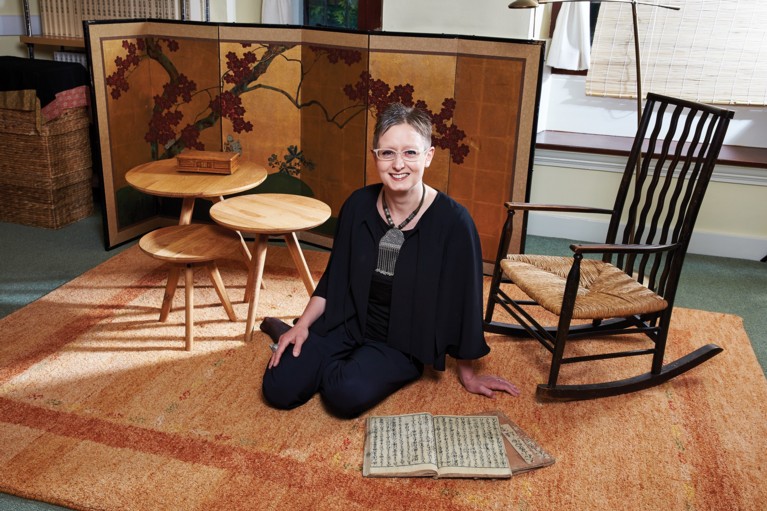Laura Moretti – Japanese Early Modern Texts
Kyoto in the 1660s: here the thriving economy of early modern Japan had become the cradle of a robust consumer society.

Large-scale panoramic paintings of the city and printed guidebooks of the time depict a diversity of shops that sold all sorts of goods, from iron rice pots to beautifully crafted fans. And booksellers. Gazetteers record that there were hundreds of them and visual materials show that their customers extended to the ‘everyman’, regardless of gender and age: craftsmen, merchants, peasants, women and children all engaged in reading.
What the early modern ‘everyman’ of Japan was consuming, reading and enjoying fuels my research and the questions posed are not dissimilar from Gary Kelly’s seminal Oxford History of Popular Print Culture series: the only difference is that I work in Japan, not the West.
My current research explores three main areas of early modern Japanese literature. The first focuses on seventeenth-century popular genres, aiming to produce the first in-depth, extensive study of them in a Western language and to challenge the received view shaped by Japanese academia. The second, partly funded by the British Academy, looks at single-sheet prints from the first half of the nineteenth century, which were the cheapest form of reading matter.
The third concerns children’s literature. This is a topic dealt with in my recent monograph on The Fashionable Ise (1766): The Origins of Utagaruta (Ise furyu: Utagaruta no hajimari), a rewriting of the tenth-century classic The Tales of Ise (Ise monogatari) in a cheap picture-book format. This picture-book lay unnoticed for more than two centuries, but its examination has opened up unexplored aspects of Japanese literature in general and of children’s literature in particular.
My field of interest still remains under-researched in the West and to a degree in Japan. There are several reasons for this. One is that early modern Japanese literature does not fit comfortably with the image of the modern Western novel, thereby discouraging generations of scholarly inquiry because the Japanese works are deemed to be ‘not good enough’.
Another hurdle is understanding the language and script of the original documents. The classical grammar used in early modern Japanese texts displays puzzling variations not yet discussed in historical linguistics. Deciphering these texts also requires a knowledge of classical Chinese read as Japanese (kanbun kundoku) and the epistolary idiom known as sorobun. Moreover, there are multiple variants of each phonetic sign and of the calligraphic rendering in cursive of both phonetic and logographic characters. Although contemporary Japanese would have learnt this script in primary education, today it needs a highly specialised palaeographic knowledge that outside Japanese academia is possessed by only a handful of scholars.
My generation would have never dreamt of being trained in such skills; we could only acquire them through self-study or by seeking the guidance of a Japanese scholar. I am sure we can and should guide a new generation of scholars through this complex territory.


